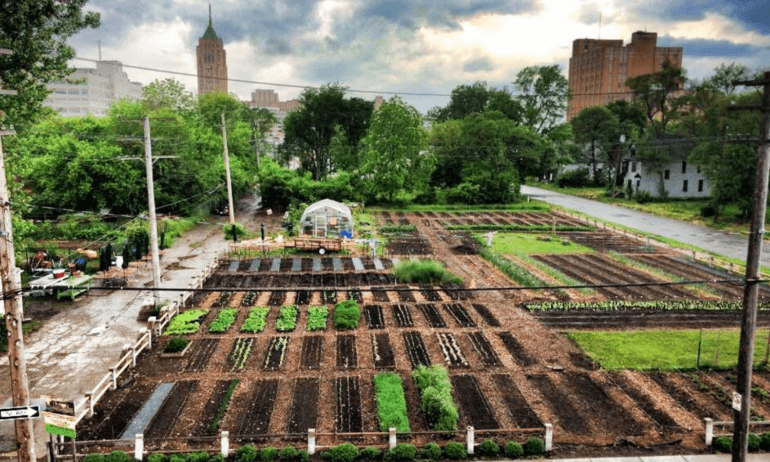City Blooming Things To Know Before You Get This
City Blooming Things To Know Before You Get This
Blog Article
Not known Incorrect Statements About City Blooming
Table of ContentsNot known Details About City Blooming Our City Blooming PDFsThe Ultimate Guide To City BloomingThe Of City BloomingThe smart Trick of City Blooming That Nobody is Talking About
Fascinated in expanding food available in the City of Chicago? Thinking of beginning a community garden? Adjustments to the Chicago Zoning Ordinance permit agricultural uses like community yards and metropolitan ranches in numerous parts of the city. Below is a checklist of frequently asked questions pertaining to the rules and policies that growers must take into consideration when preparing a metropolitan farming task.
The zoning amendment does not change any various other codes dealing with composting, building permits, purchasing or leasing City had residential property, organization licenses or environmental contamination. There are existing codes that manage these problems and they remain in full effect and may be relevant to your project. Area gardens are commonly owned or managed by public entities, civic companies or community-based companies and maintained by volunteers.
Urban farms grow food that is meant to be offered, either on a not-for-profit or for-profit basis. Because of their industrial purpose, metropolitan ranches require a service certificate. Yes. A community yard is permitted to market surplus create that was grown on website if the sales are accessory or secondary to the yard's primary function defined over.
The Basic Principles Of City Blooming
Composting is permitted yet only for plant product that is created and made use of on site. The quantity of compost material can not surpass 25 cubic lawns at any type of given time according to the standards in 7-28-715 of the City's Municipal Code. Yes. Due to the fact that the dirt at most brand-new yard sites needs modifying, compost, dirt, timber chips, or various other materials can be gotten to create or boost the expanding area - indoor plants.

If a building authorization is required then the hoophouse will certainly be considered an accessory building. You can learn even more concerning the structure permit needs by calling the Department of Structures. The 25,000-square-foot dimension limit is intended to stop a single area garden from controling a given block or diminishing the block's existing residential or industrial personality.
The limitation does not use to yards situated in Public Open Space (POS) areas. Can there be more than one area yard that is 25,000 square feet on a other solitary block? Secure fencing is not needed, nonetheless, yards that have large auto parking areas might be called for to install secure fencing or various other landscape design functions.
Excitement About City Blooming
B1 & B2 areas require that all industrial use activities be performed inside. R areas limit commercial task. The guidelines mirror the objective and intent of the Zoning Code. Is fencing required for city ranches? Yes. Fences may be required, along with landscape design and testing, for sure auto parking locations and exterior work or storage space locations relying on area and the specific activity happening.
Urban ranches call for building authorizations and zoning authorizations prior to building and construction (home and garden). Various other types of city evaluation may be needed depending on particular structures, tasks, size, landscaping, licensing, public health and stormwater administration concerns.
Yes. The kind of permit is figured out by what is occurring at the site. The Division of Company Matters and Consumer Security can assist identify the certain kind of organization license that's required. Yes. Off road car parking is required for most business jobs in Chicago. The required number of garage is based upon the variety of employees dealing with website and not the square footage of the expanding area.
City Blooming for Beginners

A metropolitan ranch can offer garden compost product created on site, however, the procedure should conform with the guidelines in 7-28-715 of the Chicago Municipal Code. Aquaponic systems are permitted inside on city farms in numerous zoning areas.
Approximately five hives or colonies of honey might be maintained as an accessory usage. Nonetheless, beekeepers need to register with the Illinois Department of Agriculture. For even more details about the recommended zoning change you may get in touch with the Division of Real Estate and Economic Growth, Bureau of Planning and Zoning at 312.744.8563.
Farming in cities and urban locations A city ranch in Chicago. Urban agriculture refers to numerous practices of cultivating. https://profile.hatena.ne.jp/cityblooming/, processing, and distributing food in city locations. The term likewise applies to the location tasks of animal husbandry, aquaculture, beekeeping, and horticulture in an urban context. Urban agriculture is differentiated from peri-urban agriculture, which occurs in backwoods at the side of suburbs.
Excitement About City Blooming
, who look for to form social networks started on a common ethos of nature and neighborhood holism. These networks can create by method of official institutional assistance, ending up being incorporated into neighborhood community preparation as a "shift community" activity for sustainable city development.
In either case, the much more straight access to fresh vegetable, fruit, and meat products that might be understood through city farming can boost food safety and security and food safety and security while reducing food miles, causing reduced greenhouse gas emissions, therefore contributing to environment modification mitigation. A few of the first evidence of city agriculture originates from Mesopotamia.
Report this page